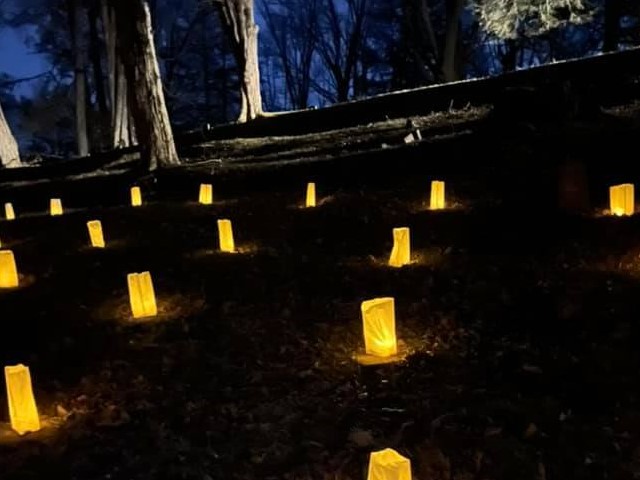Held annually on March 12 in the Pocahontas to remember and honor the 114 coal miners who died in the explosion of the Pocahontas East Mine of the Southwest Virginia Improvement Company on March 13, 1884. A luminary bag will be placed in the cemetery at 6 p m. on March 12, 2024 with the name of a miner who perished in the explosion with a luminary candle inside Plans are to post a live feed on our Facebook Page after all the luminaries are placed.CharlieC.
At 6:00 p.m. March 12, 1884, the general mine boss, W. H. Cochran, turned the operation of the mine over to the night boss, L. M. Hampton. Nothing unusual occurred until 1:00 a. m. on Thursday morning March 13, when Mr. Hampton sent a message to the engineer at the entry to slacken the speed of the fan because “the current of air being so strong in the mine that it blew out the miners’ lamps”. At either 1:20 or 1:30 a. m. a loud explosion rocked the town of Pocahontas and debris and dust flew out of the entrance of the mine. This first explosion followed by three more in rapid succession.
The General Superintendent, W. A. Lathrop, entered the mine with W. H. Cochran and two miners but was forced back by gas, which in the reports of the time was referred to as “afterdamp”. A few bodies were seen then, but fires were starting in the mine and no rescue could be made.
Mr. Lathrop ordered the mine entrance closed. Experts on mine explosions started arriving the next day. The mine was flooded to stop the fire. It was several weeks before the bodies of the miners could be removed. The land Where the miners were buried became the Pocahontas Cemetery as the town had no cemetery. The few settlers who had died had been buried in the Houch Cemetery, approximately one mile from this site on the east end of Peeled Chestnut Mountain.
Pocahontas. Of the 114 killed, 65 were white, the majority of them were from West Virginia, Virginia and North Carolina. There were 26 Hungarians, a few French, Germans and Indians. The remaining 49 were Black, mainly from Virginia.
The cemetery is a unique place. It was extremely unusual for people of different races and ethnic backgrounds to be buried together in a border or southern state, in the period of to each other, worked together and died together.
Written by Thomas Burns Childress from various sources
